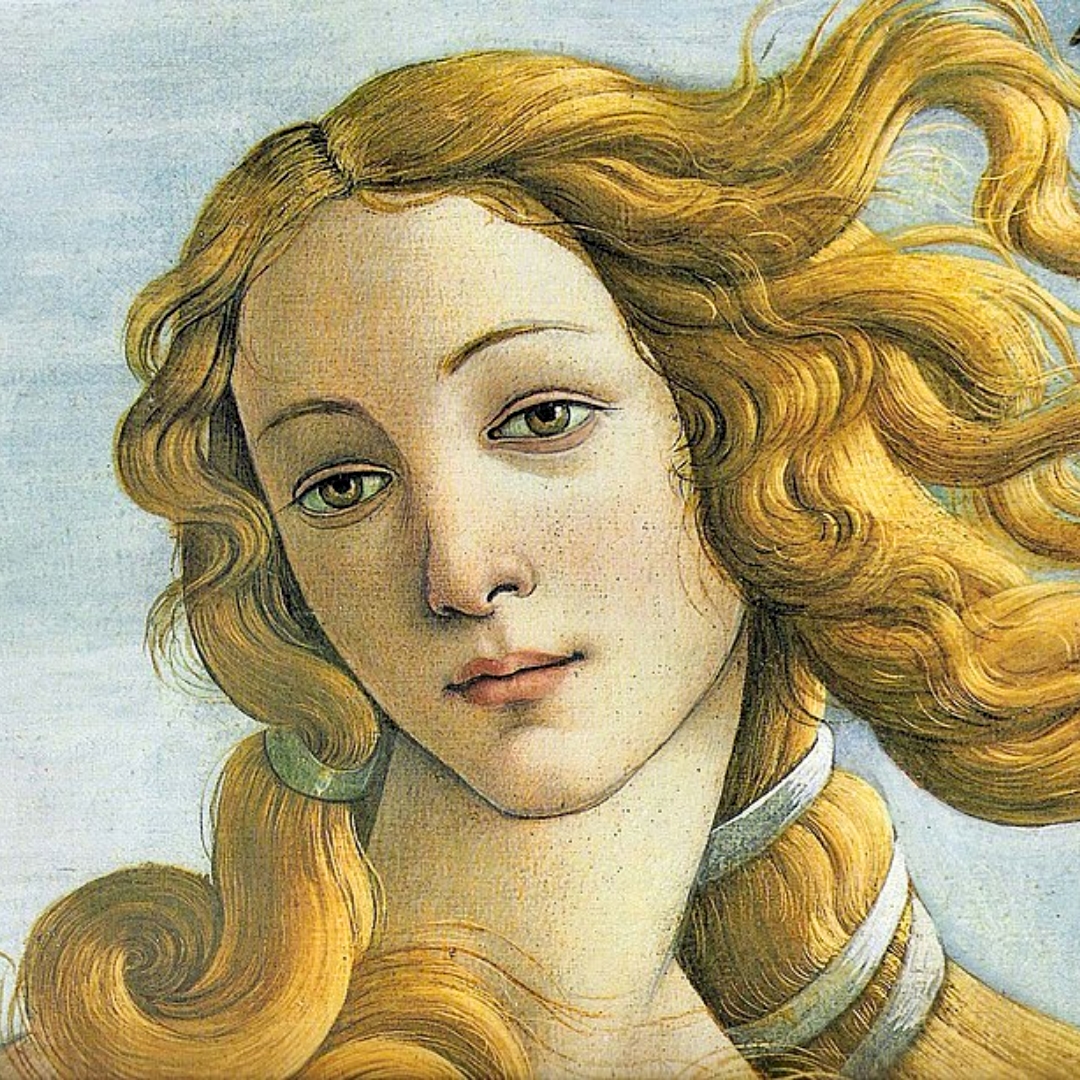Simonetta Vespucci, often referred to as la bella Simonetta, was an Italian noblewoman from Genoa, celebrated as the epitome of beauty in 15th-century Northern Italy. Renowned for her stunning looks, she became a beloved muse during the Renaissance, inspiring some of the era’s most iconic artists. Among those who immortalized her were Botticelli, Piero di Cosimo, and several other prominent Florentine painters.
To understand Simonetta Vespucci’s fame, think of her as the 15th-century equivalent of a 1990s supermodel or Marilyn Monroe in the 1950s. In 1469, Florence was at its peak, with the Medici family subtly wielding power through banking and influence. They surrounded themselves with the era’s top artists, poets, and intellectuals, who shaped the standards of beauty. When Simonetta arrived in Florence, they all agreed she embodied these ideals perfectly.
Like many masterpieces of the Italian Renaissance, Sandro Botticelli’s The Birth of Venus (1485) carries a sense of the sublime. The painting shows the Roman goddess of beauty rising from a shell, surrounded by other deities. Often interpreted as an allegory of love and renewal, the central figure of Venus elevates beyond earthly sensuality, embodying an idealized, divine purity and grace rather than the typical nudity of human form.
Botticelli wasn’t the only artist to seek Simonetta Vespucci as a muse. During her time in Florence, she also posed for Piero di Cosimo, who painted her as Cleopatra, and inspired the poems of Luigi Pulci and Lorenzo the Magnificent.
Lorenzo de’ Medici, head of the powerful Medici family, was another admirer. After his brother Giuliano’s assassination in 1478, Lorenzo became the de facto ruler of Florence. Giuliano had once competed with him for Simonetta’s affection, lavishing her with gifts and even entering a jousting tournament with a banner painted by Botticelli, declaring her “La Sans Pareille” — “The Unparalleled One.”
Botticelli may have been Simonetta Vespucci’s most devoted admirer, forever linking her beauty with that of the goddess Venus. However, he didn’t complete The Birth of Venus until about a decade after her death. While Botticelli lived to 65, Vespucci tragically passed away at just 22, and Florence mourned her loss for a month.
Not all historians agree that she was the model for The Birth of Venus. Felipe Fernández-Armesto dismissed the idea as a “vulgar assumption,” suggesting the belief was based on the notion that the most beautiful woman of the time must have inspired Botticelli’s most famous painting. Yet, the facial features of Venus do resemble those in Vespucci’s portraits, and Botticelli’s deep affection for her is evident—he even requested to be buried at her feet. Today, his grave is indeed beside hers, at Florence’s Church of Ognissanti.

